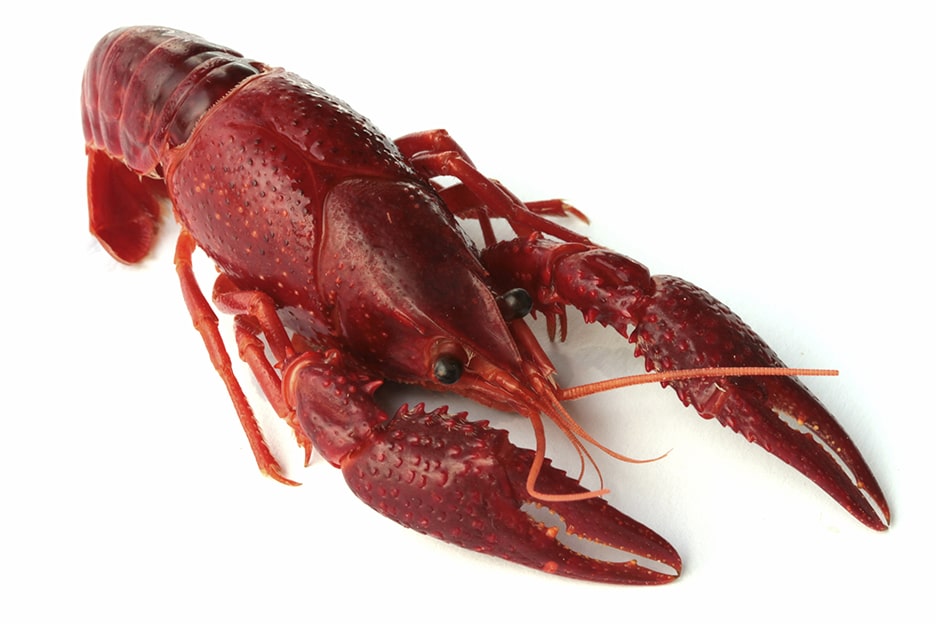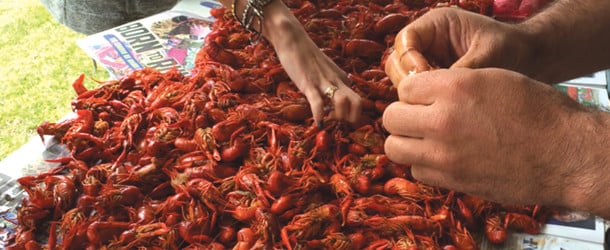Or, Never Waste A Good Newspaper
By Lydia Crochet
Ah, Louisianans. We make it a point to stand out, don’t we? So many things set us apart from the rest of the nation. Our multi-cultural backgrounds, unique accents and animal/amphibian-driven festivals are like those of no other state. Our zydeco and Cajun music is in a class of its own. And “county”? Please. We all know the correct term is “parish.”
But what really makes Louisiana different? The true claim to fame is the authentic cuisine.
When it comes to Louisiana’s food, there’s no comparison. People travel from all over the world to sample our gumbo, jambalaya and étouffée. But some outsiders just don’t get it.
It’s not out of the ordinary for vacationing Louisiana natives to be questioned about our state’s food. “Is boudin some form of intestine?” and “Do you people eat squirrel?” are probably two of my favorites (and both, I might add, deserve their own article).
But the number one food Louisianans are asked about? Boiled crawfish.
Some inquirers enthusiastically declare they would love to try the delicacy, while others are not so sure, likening the experience to an episode of Fear Factor. To those of us who were born and raised in Louisiana, eating boiled crawfish is second nature. Weddings, graduations, religious events, birthdays, and Saturdays are all known to be celebrated with a crawfish boil.
But the truth is, we don’t need an excuse … only a craving. Inquiring visitors want to know …
Are crawfish and crayfish the same thing?
Yes, although Louisianans dropped the “cray” long ago. They’re also known as crawdads, mudbugs and, to one local toddler, “crawl-fish.”
Where do crawfish come from?
From February to June, Louisiana crawfish are harvested in shallow ponds, or rice fields, across the state (most crawfish farms use rice as the rotation crop). Other states, like Arkansas, Texas, the Carolinas, and even California, produce small harvests of farmed crawfish every year. But Louisiana dominates the industry by providing over 90 percent of the nation’s crawfish.
Native Americans were the first on record to catch and eat crawfish in our state, and the early European settlers, like the Acadians, followed suit. Commercial sales of crawfish began sometime in the late 1800s, although they were primarily used as bait until the 1960s.
Are crawfish “mini lobsters?”
No. Although they resemble lobsters, crawfish are not bite-sized lobsters. Therefore, there’s no need to dip the tails in melted butter; save that for the corn and potatoes. In fact, there are several sauces that 
Are lobsters “biggie-sized” crawfish?
No. Well, not exactly. I posed this question to my Dad, and received an obvious answer: “If they’re seasoned right, sure.”
How do you peel a crawfish?
There’s a process involved in peeling and eating crawfish. It’s not fast food, or a “quick bite.” It takes time, patience, and a touch of skill. While some are faster than others when it comes to peeling, it’s not a race, so take your time.
There’s no need for nutcrackers, pliers, or any special knives or picks to open a crawfish tail. No, no. Save the tools for the crabs.
For crawfish, we use the “shuck, pinch and peel” method. First, shuck the head of the crawfish by twisting the tail away from the head/body segment. Discard the head (i.e. toss the head into a pile). Next, pinch the tail to crack the shell, and peel the shell away. Finish by deveining the tail meat. Now eat!
Helpful hint: Should you come across a tough crawfish with a hard shell, fear not. There is a logical and refined way to handle this. Scope out the table for someone with muscles, and hand it to him (or her). In Louisiana, we like to call this the “Here, peel this for me” method. Works every time.
What’s usually served with boiled crawfish?
Corn, potatoes and beer (or whatever’s in the ice chest).
Are boiled crawfish messy?
Yes. Very. Think along the lines of a toddler with a cupcake. Your hands and face will be covered with orange “stuff” and seasoning. What’s the “stuff”? Don’t ask. And about the seasoning: embrace it. Wearing latex gloves to avoid seasoning from getting into a hangnail is just wrong, so stop it. It’s like jumping into a cold swimming pool; just get over the initial shock, and move on.
When it comes to cleaning up, there’s actually an art to washing your hands after peeling crawfish. If you’re outdoors, you’ll start at the water hose, and make your way indoors to the designated sink, complete with liquid soap and a fingernail brush. If you’re indoors, go straight to the designated sink.
You’ll need a paper towel to hold while turning on the faucet and pressing the soap dispenser. If you can’t seem to locate a paper towel for this task (probably because the entire stock is piled with the heads on the table), fear not. There’s a logical and refined way to handle this. Simply hold your hands up like a scrubbed-up surgeon, scope out the room for someone with clean hands, and grunt. Works every time.
If you’re a visitor to our state, and find yourself attending a crawfish boil, here are a few rules, or commandments, to adhere to while eating boiled crawfish:
— Avoid wearing white clothing and evening gowns, and limit your number of rings and watches.
— Stock up on paper towels (see the “Are boiled crawfish messy?” segment of this article). A good rule of thumb is, on average, one roll per person.
— Play Cajun and zydeco music during the entire process. It calms the crawfish before show time, promotes seasoning absorption while boiling, and enhances the flavor during consumption. It’s a must.
— Make your selections from the pile of steamy crawfish based on the size of the pincers. Pincers are full of meat, but can be tricky to extract. If it’s your first attempt, I suggest using the “Here, peel this for me” method.
— Pace yourself. There’s no shame in being the last one at the table. (And as an added bonus, if you’re last to wash up, there will be plenty of clean hands available to turn on the faucets.)
— Say “Aye-eee” after consuming every other pound or so. Why? To complement the chef, of course.
— Avoid making direct contact between your fingers and your eyes for at least 12 hours. Ouch.
Crawfish are a staple in Louisiana’s food culture. Curious visitors need to know that there are plenty of ways to enjoy this delicious delicacy, not just boiled. Mudbugs are served in many dishes, like jambalaya, crawfish pie and file’ gumbo (as the song goes). They’re also added to many other dishes, like dips, omelets and boudin.
Welcome to our great state! And if you want to fit in with the locals, eat first and ask questions later.
















Comments are closed.